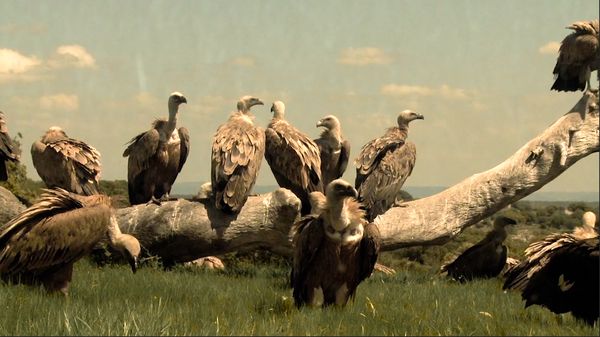Eye For Film >> Movies >> The Land Of Azaba (2020) Film Review
The Land Of Azaba
Reviewed by: Jennie Kermode

Observed in its totality, the reality of climate change is terrifying. It can leave people feeling hopeless, without the least idea how to fight back. Break it down into local projects, however, and it becomes clear that it is still possible to make a difference. In this case, restoring the land of Azaba has the potential to regenerate a substantial ecosystem.
The Campanarios de Azaba Nature Reserve is a region of western Spain once rich in wildlife which has been degraded through centuries of increasingly aggressive farming, hunting and neglect. It's an area still farmed today but the ecologists who have chosen it as the focus of one of Europe's largest rewilding projects are confident that they can work with rather than against local producers, striving to win them over to everything from new tree pruning techniques to tolerance for wolves. The idea is that restoring balance to the environment will benefit the farmers too as the soil is enriched and natural cycles of predation reduce damage to their crops.

The bulk of production here is centred on oak trees. Cork oaks produce, well, cork, including the really high quality stuff used when bottling champagne. Others produce acorns so rich and sweet that humans can enjoy them with little preparation. They're used to fatten free-roaming pigs to produce the gourmet ham for which the region is famous. Farmers and ecologists alike are interested in preserving rare varieties of oak, some of which are unique to this area. There is also a focus on preserving rare animals, such as a species of horses with only a couple of dozen members left.
If you've watch films like Serengeti Rules then you'll be familiar with the idea of reintroducing predators as a method of environmental regeneration. The wolves are an obvious choice here, but foxes and various predatory birds also fill important niches. To persuade these animals to stay in the area (and not eat straying livestock), the scientists begin by breeding rabbits. The rabbits, initially confined together in a large pen, seem willing enough to engage with his project but also clearly enjoy gorging themselves during its initial stages. One gets so lumpen that it struggles to fit into the artificial starter burrow created for it, instead bounding away to take its chances elsewhere.
The work of the project is arduous but varied. It's creative enough for the farmers to take a genuine interest, and as we see more wild species returning over the course of the film, we too should be able to recognise its potential. Structurally, this is a fairly straightforward documentary, but the processes it depicts are important. Similar approaches are being tried out everywhere from the Sahara to suburban back gardens in the UK. These are small steps, but that can be said bout the start of any journey.
Reviewed on: 07 Jun 2021

















